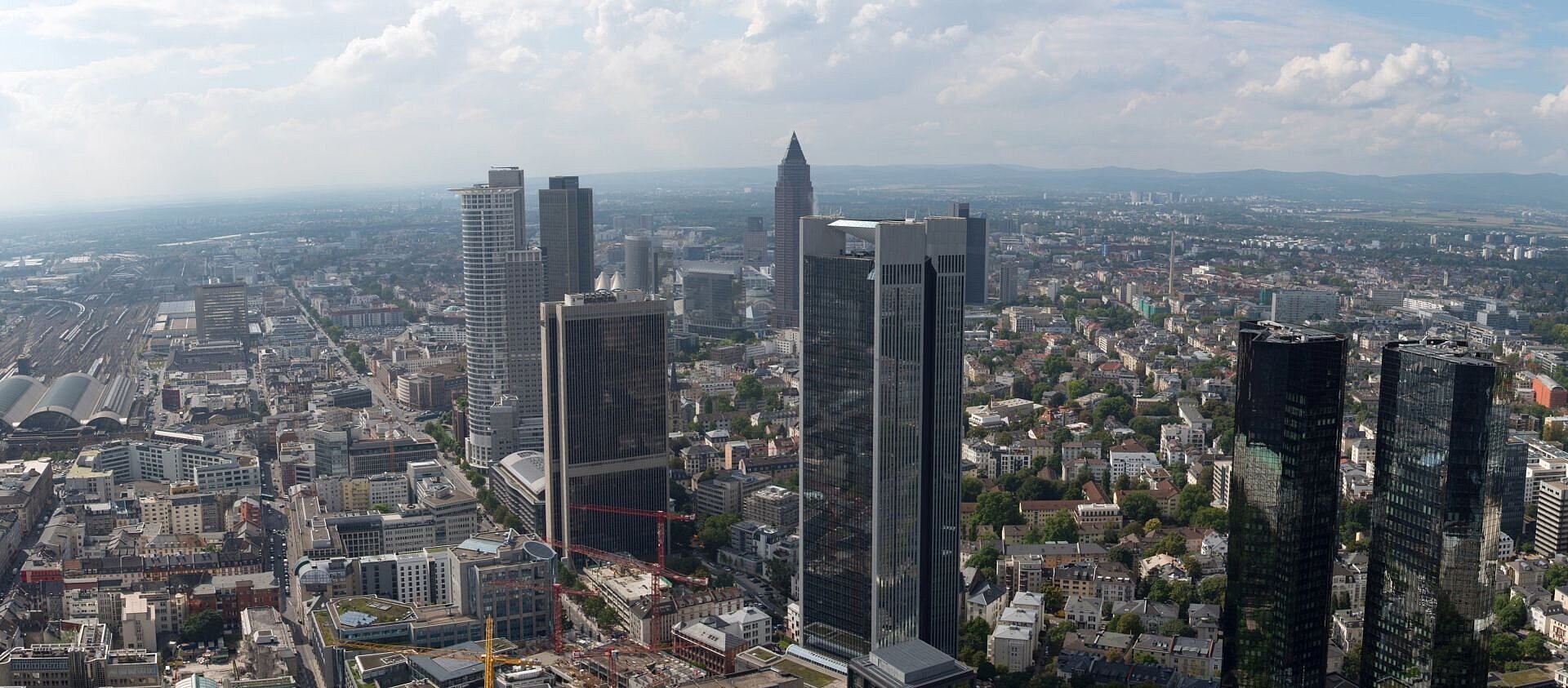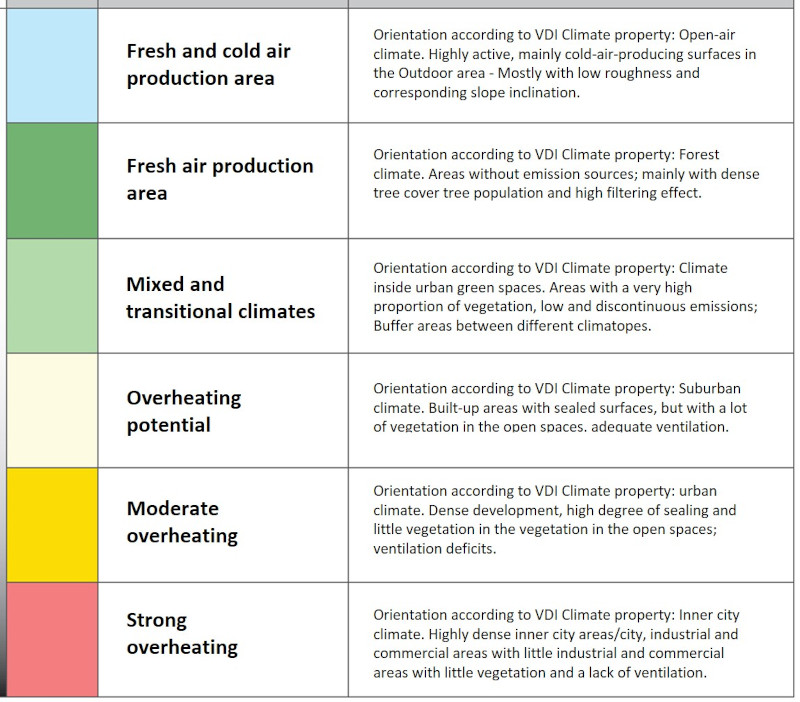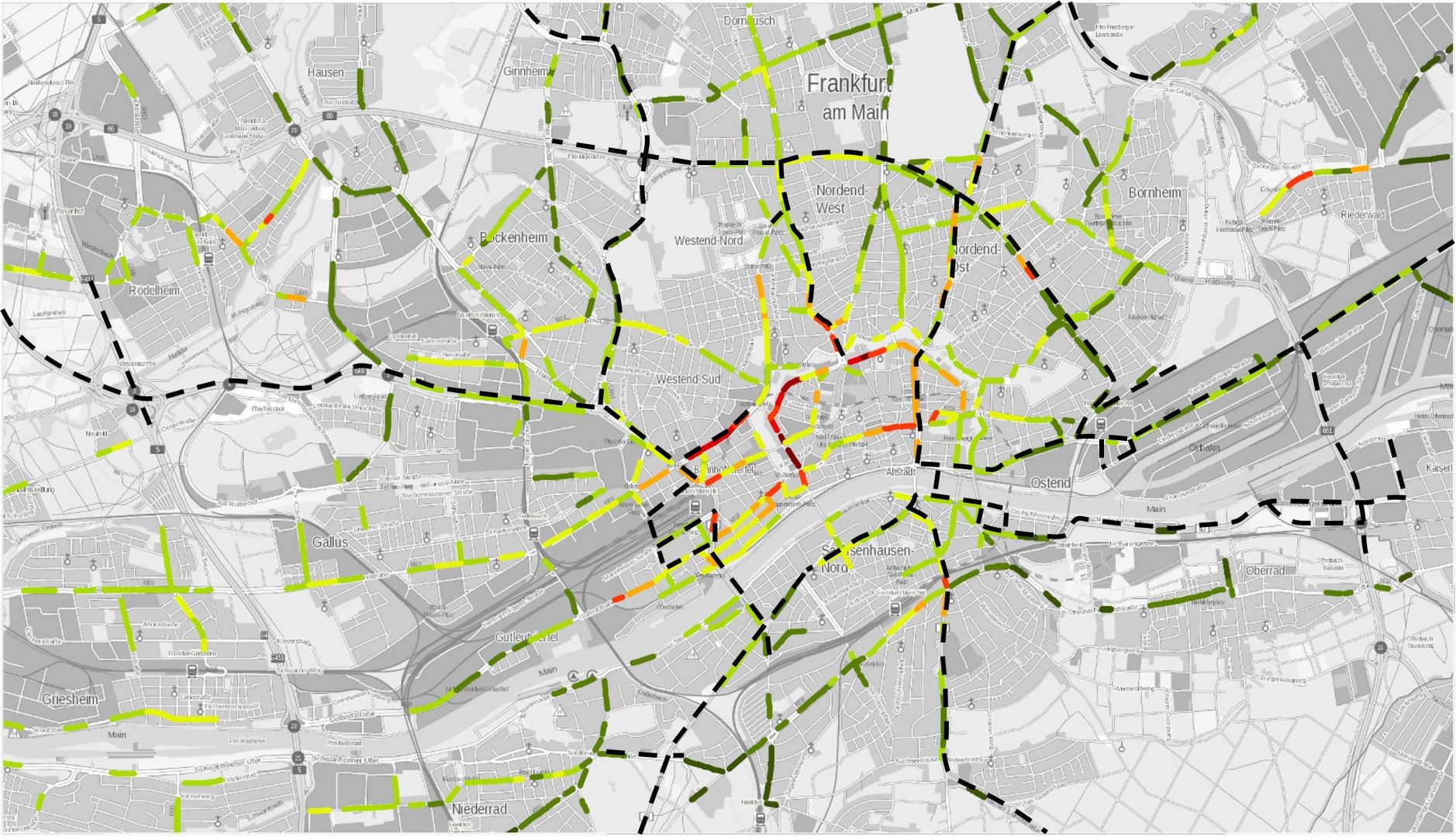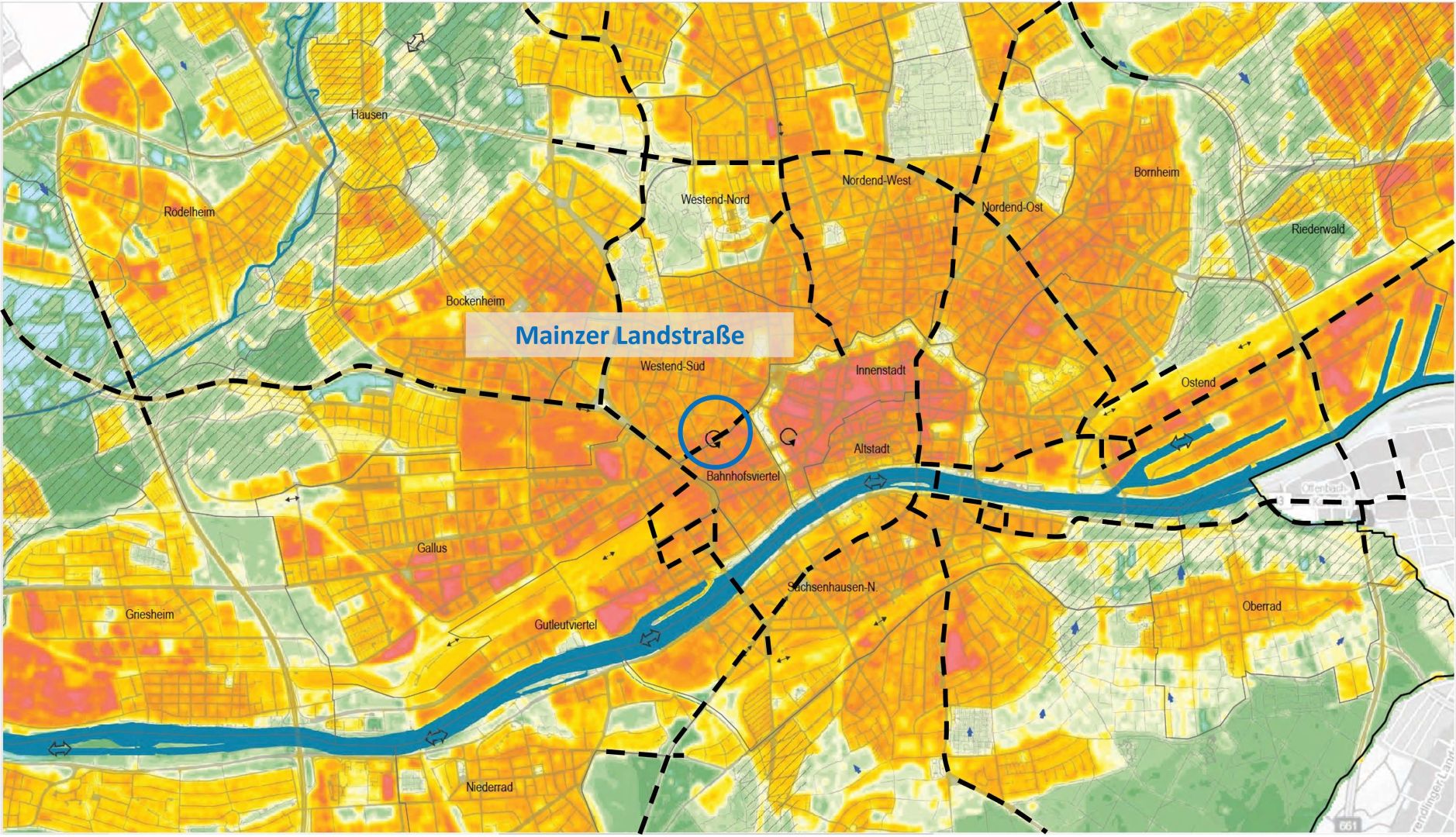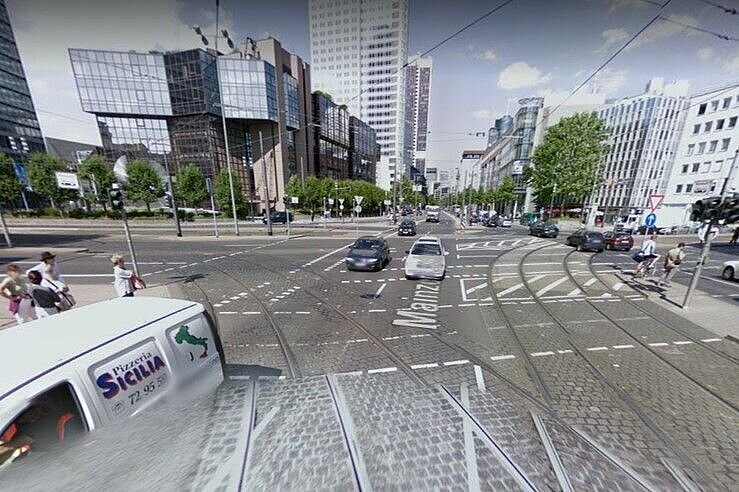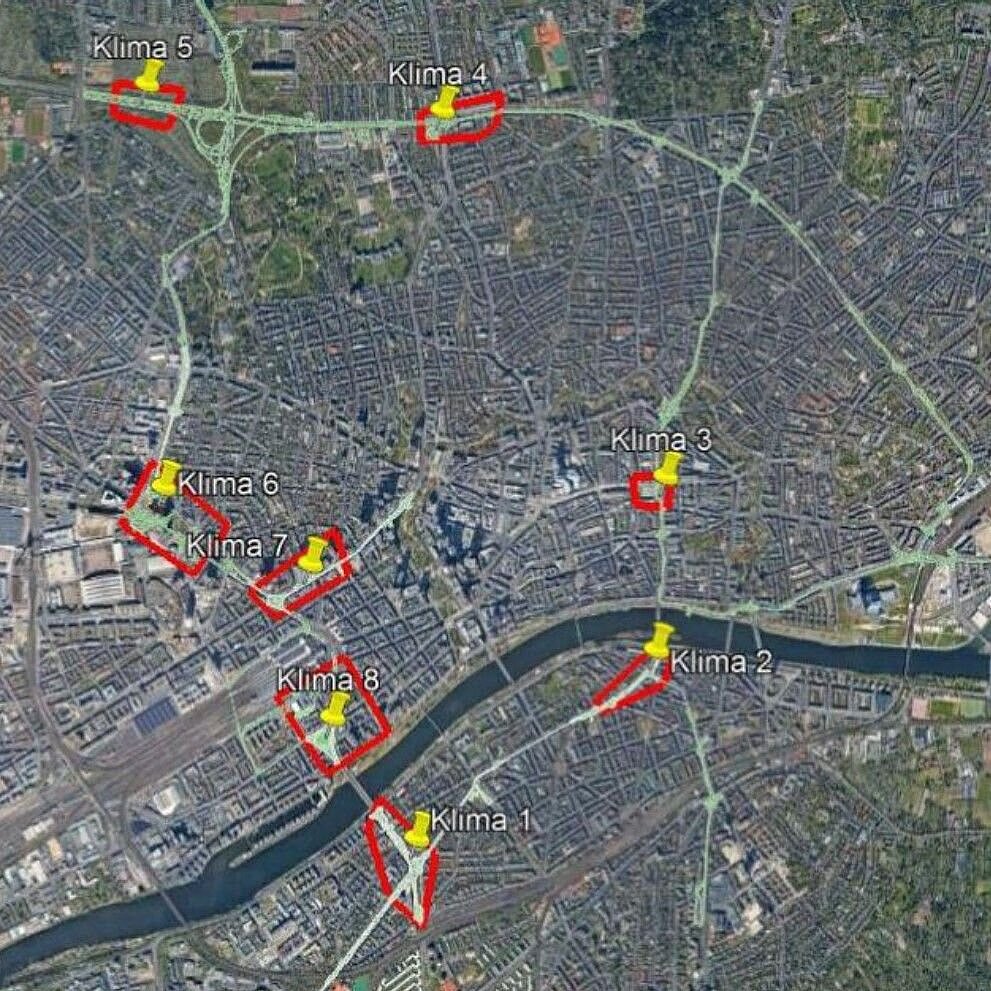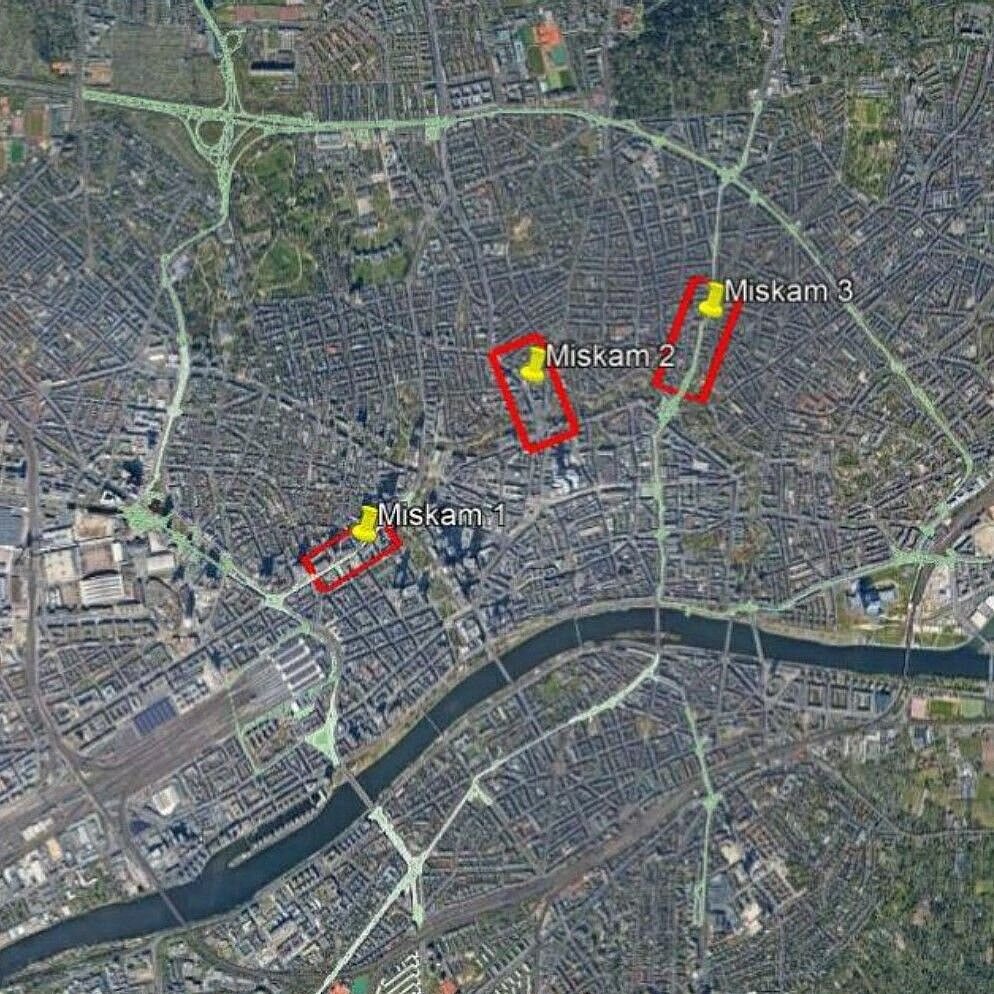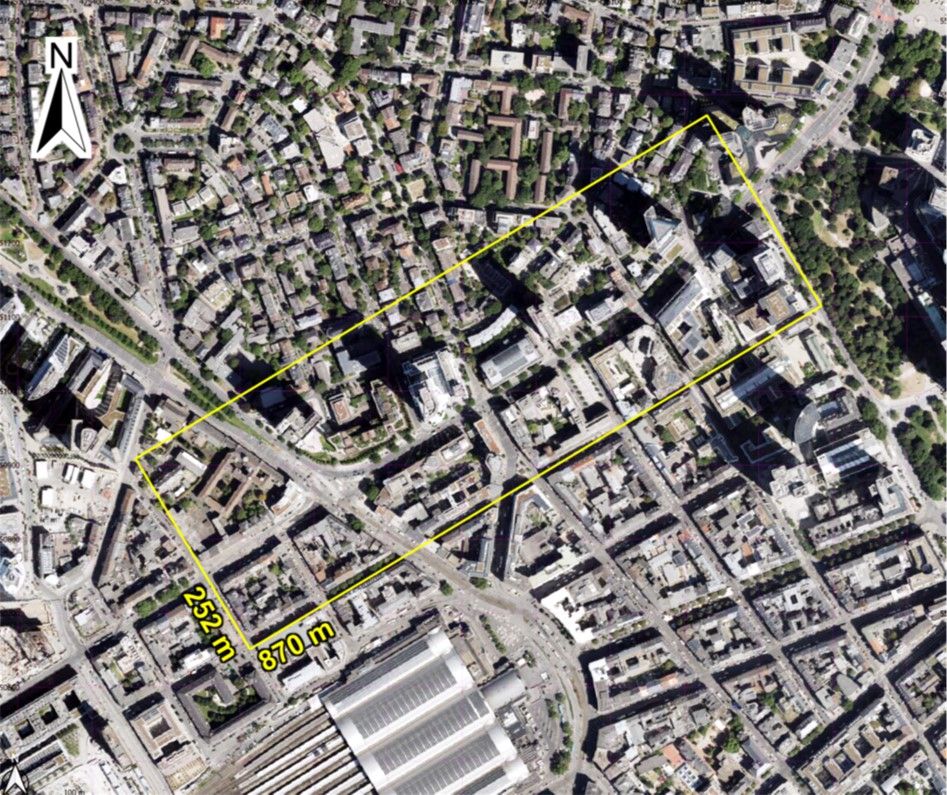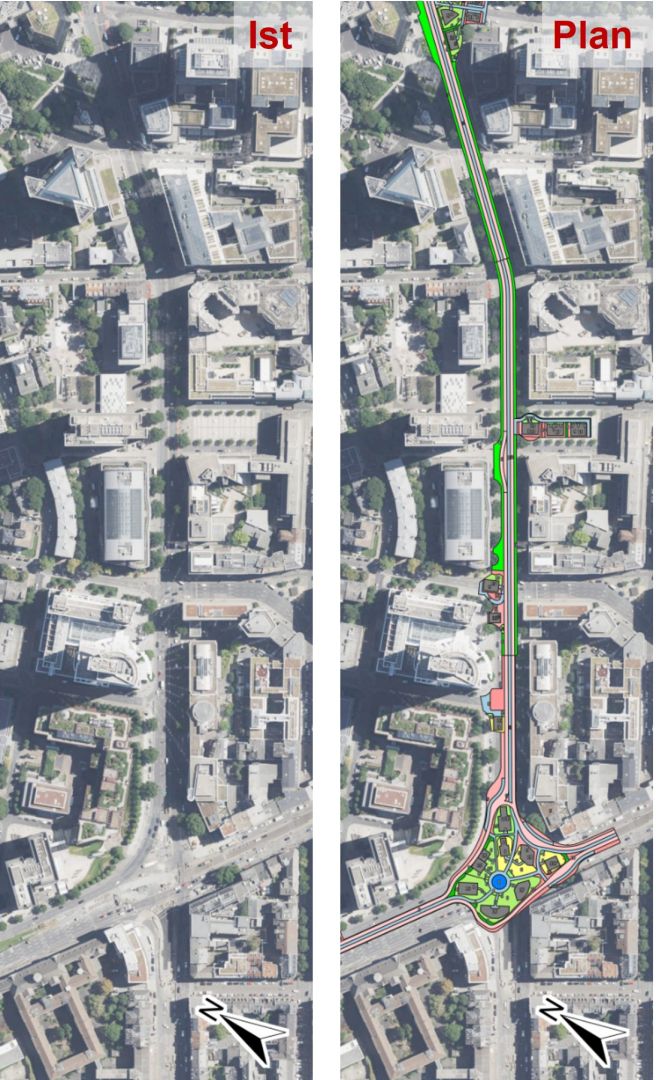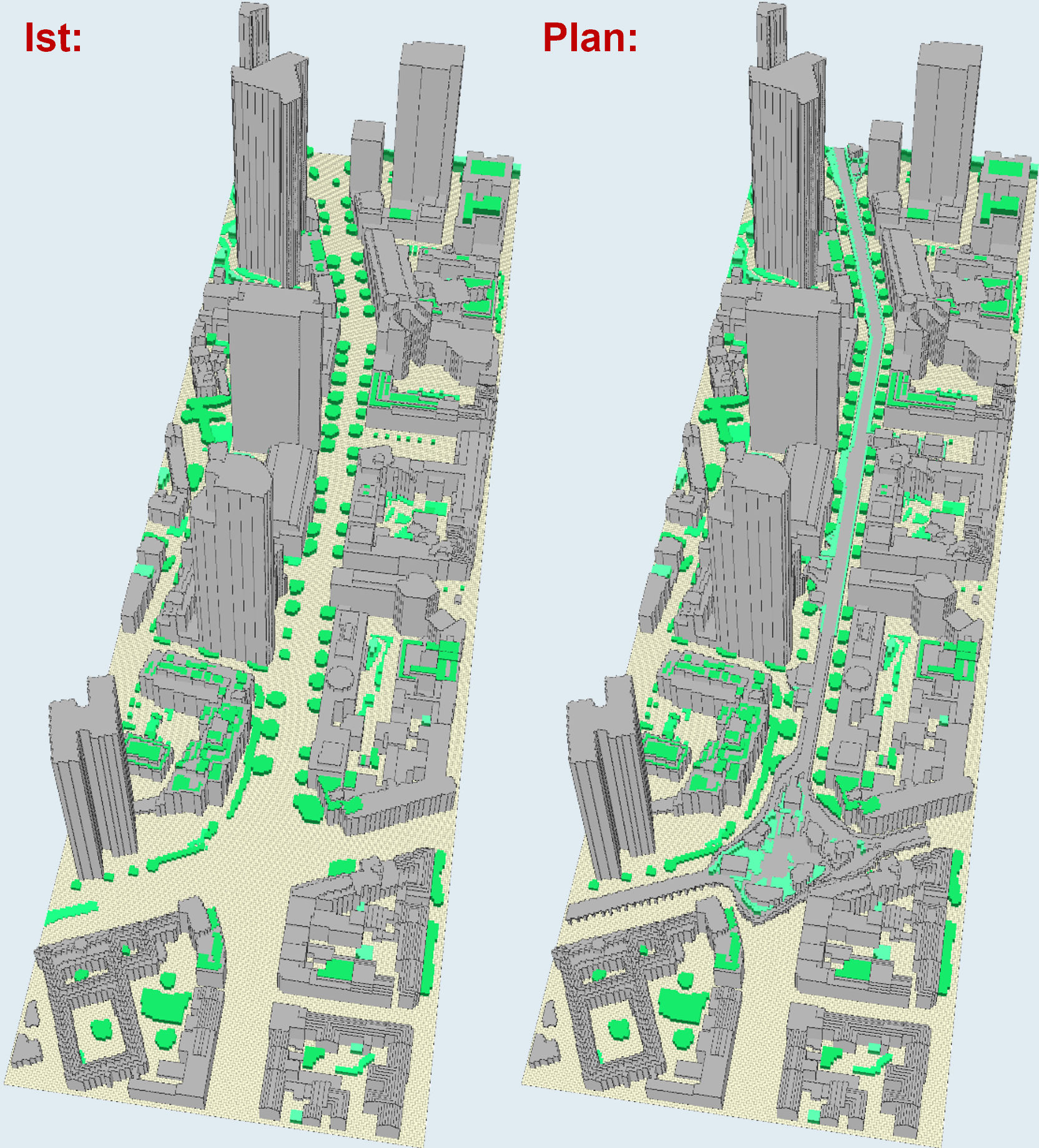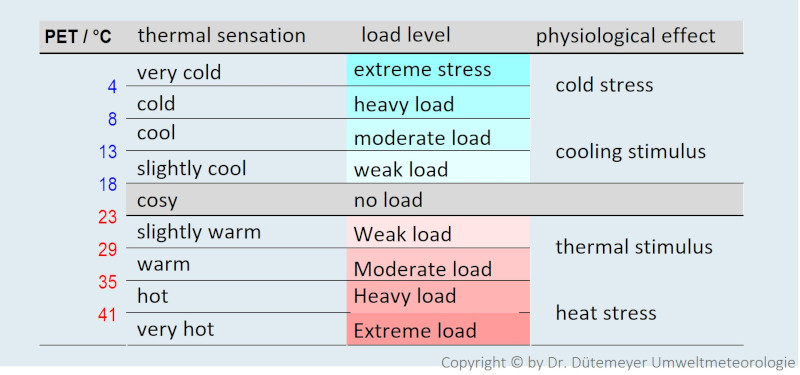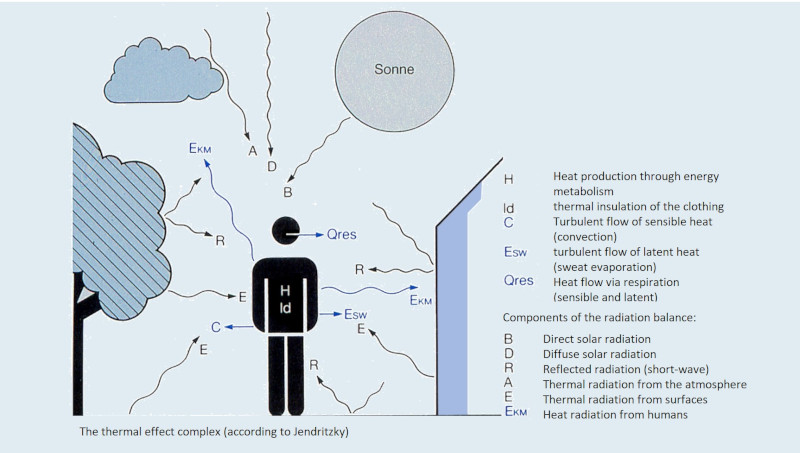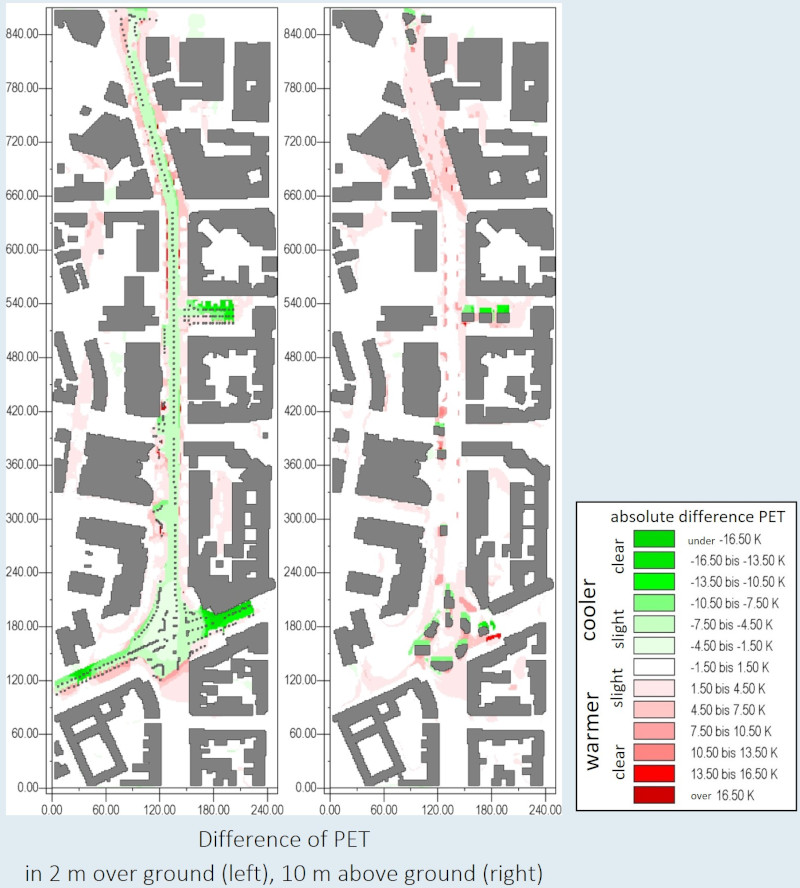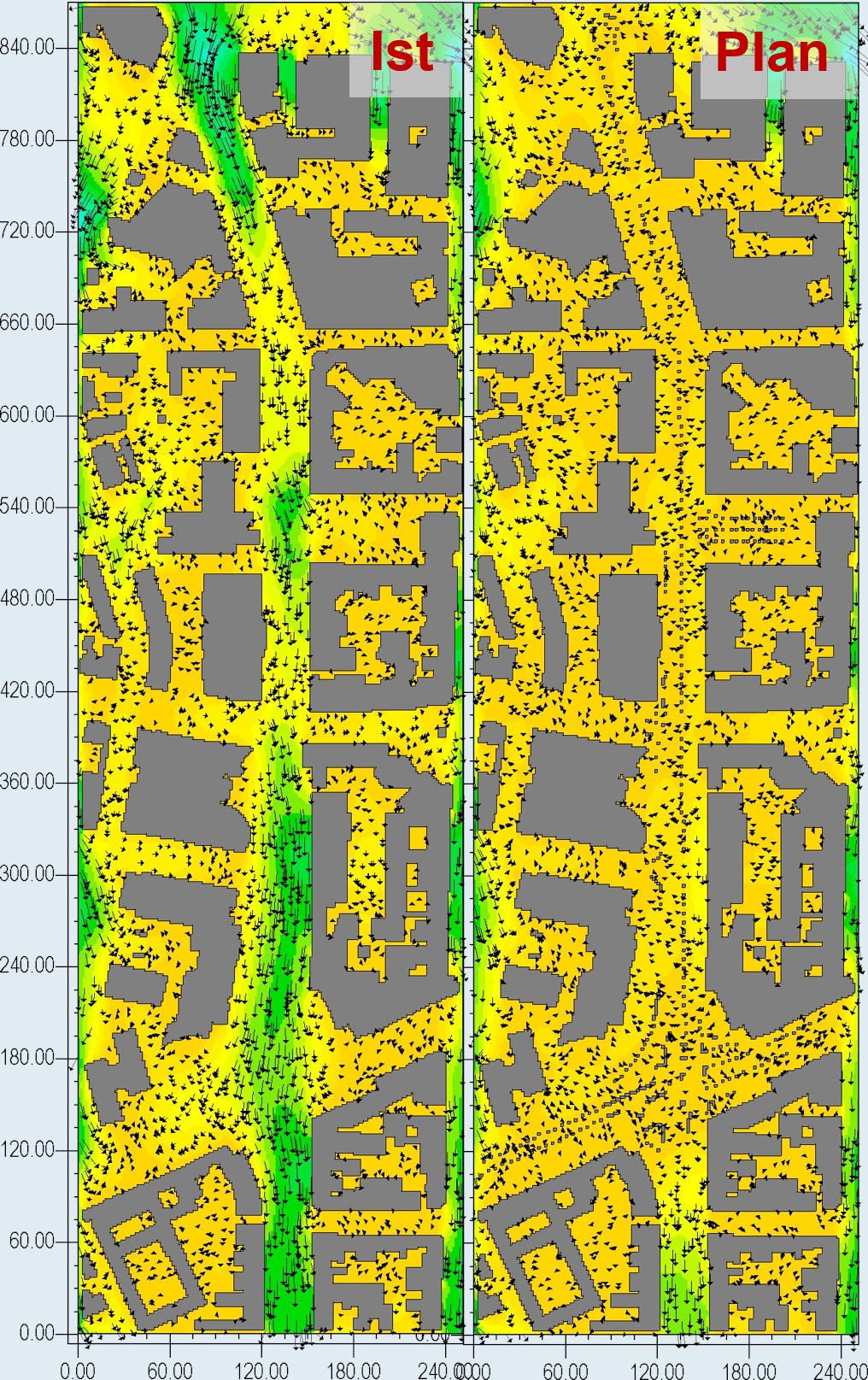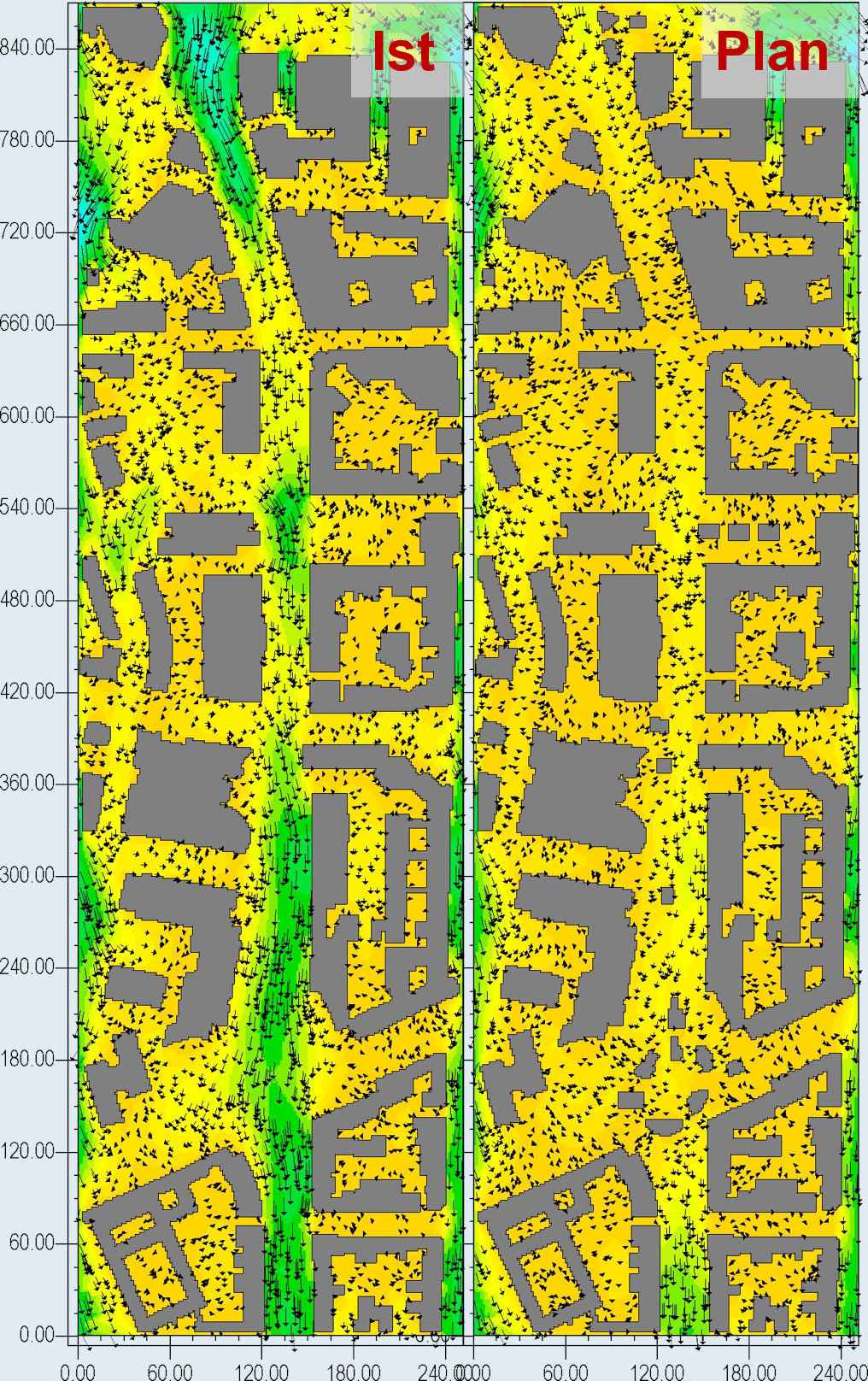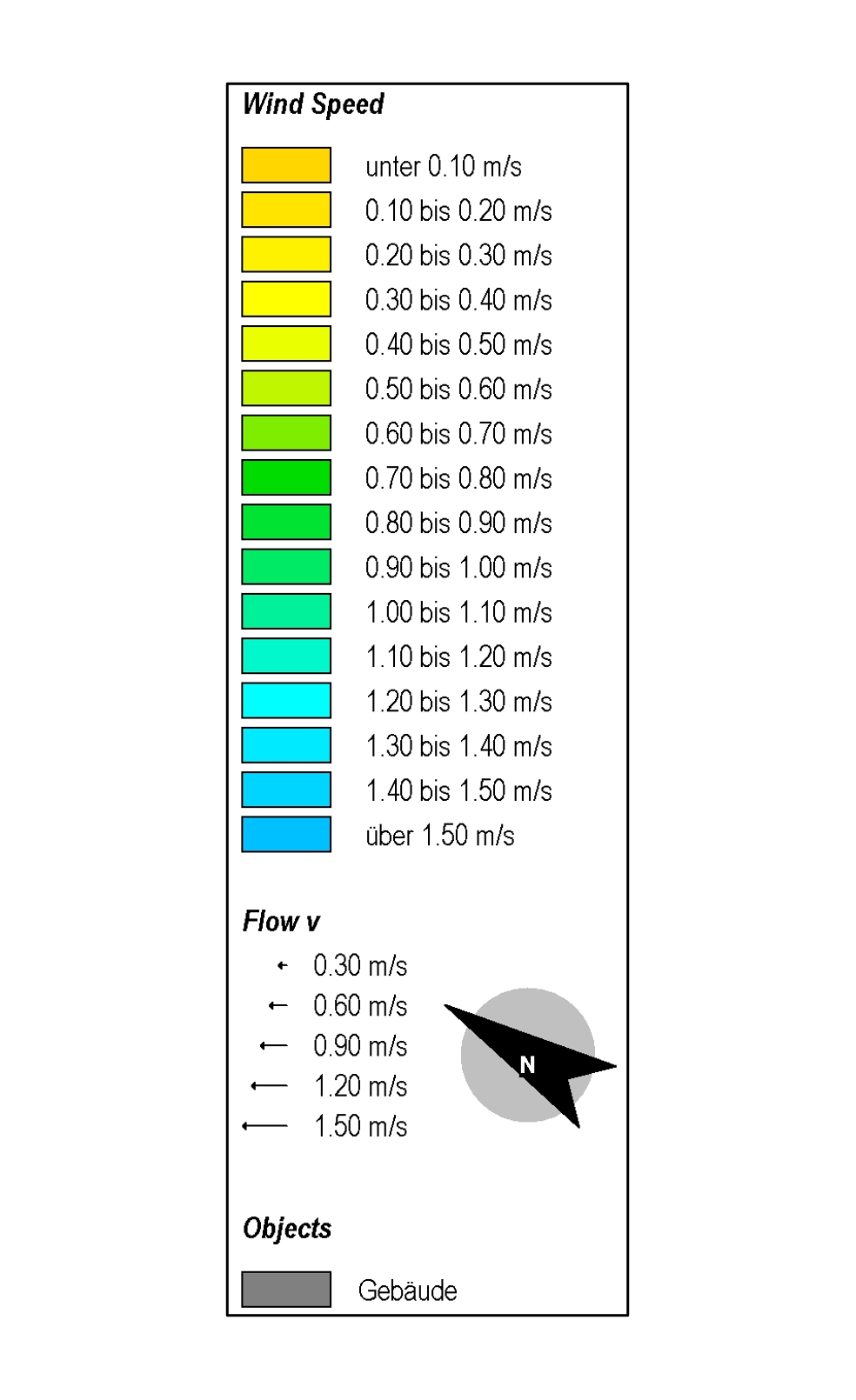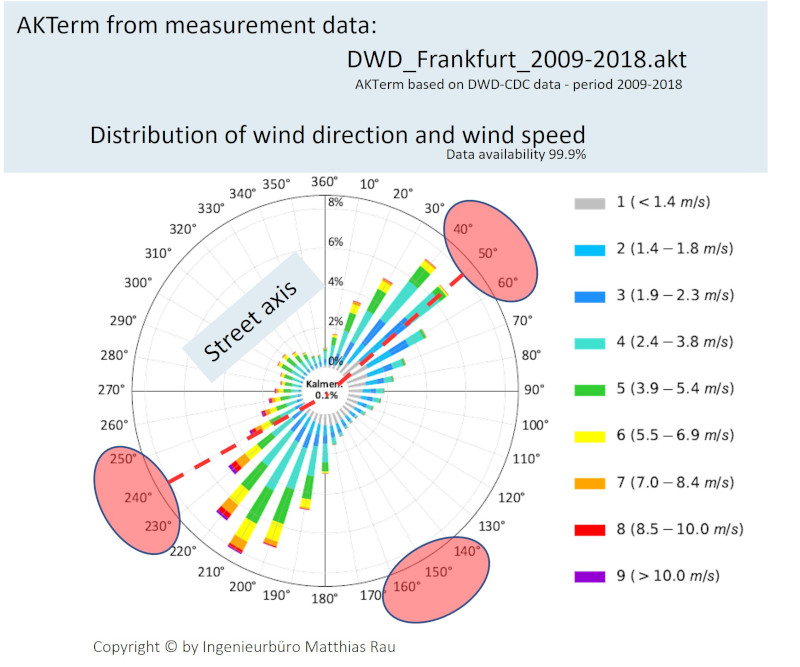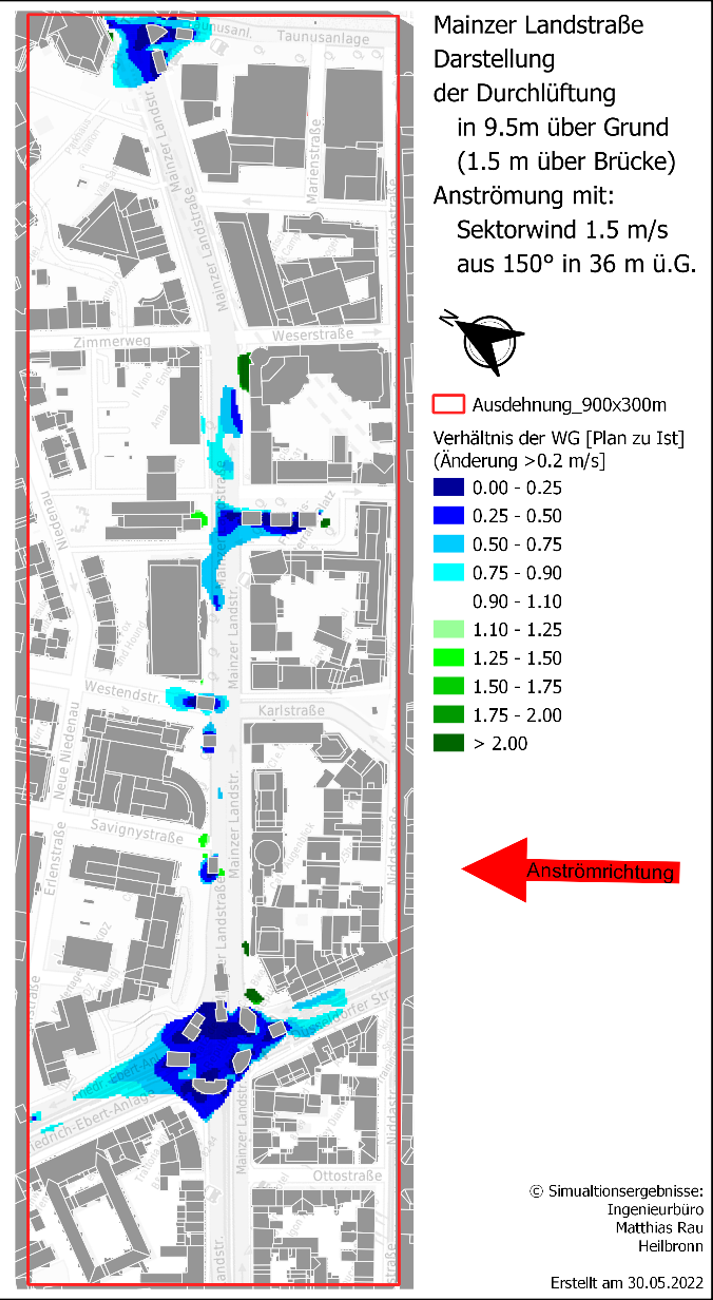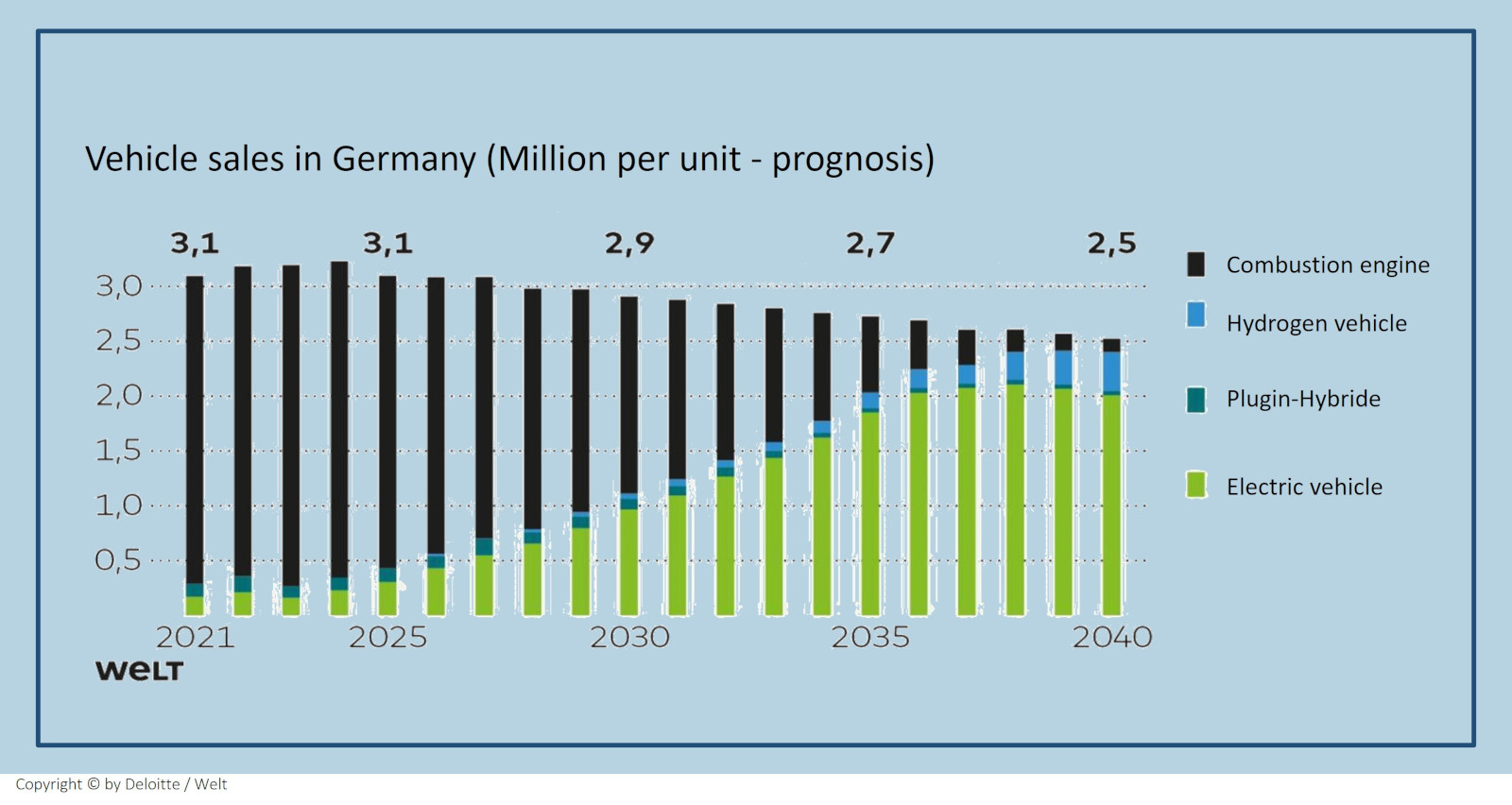Content: The thermal and dynamic impact of Frankfurt's bridges is analysed exemplarily on a study area in the city centre with the help of computer simulations
The section of Mainzer Landstraße starting from Platz der Republik was chosen as the study area, as this was identified as the potential "worst case passage" of the Frankfurt bridges.
The thermal conditions with regard to temperature and local flow behaviour were analysed as they appear on a hot summer day in the ACTUAL versus PLAN condition. Furthermore, the wind dynamic effects of the Frankfurt bridges were simulated in the same study area, with an average cloudy day as the meteorological starting position, on which a common superordinate wind system comes into play. Several inflow directions were considered.
Potential effects of the bridge construction on pollutant accumulation under the bridges were not analysed, as a significant decrease of pollutants in the road space can be expected anyway until the completion of the bridge construction due to the expected rapid increase of emission-free e-cars and hydrogen trucks.



